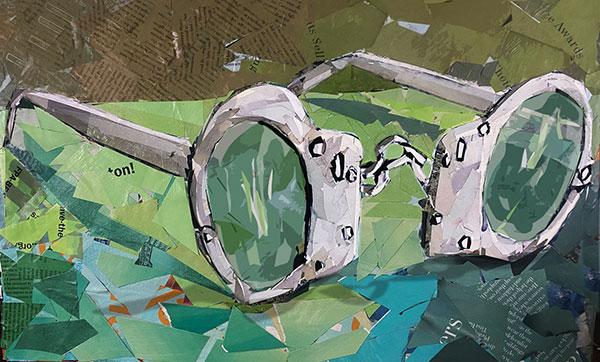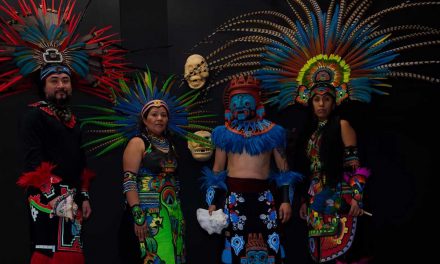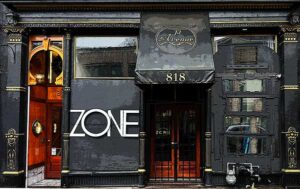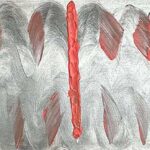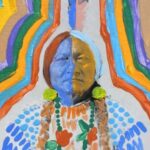
DEPTH
New vision from Hampton Rodriguez
MAY 18 2024 / 6:00pm
at the Propulsion Zone Gallery
818 SW 1st Ave
Portland Oregon
Pintor dominicano, nació en Santo Domingo, Estudio Ilustración y Bellas Artes en 1993-1994 en la Escuela de diseño de Altos de Chavón, afiliada Parson School of Design de Nueva York. Realizando varias exposiciones colectivas en su país natal, antes de trasladarse a Barcelona, España, para continuar sus estudios en la Escuela de Diseño IJTTA. Ha participado en muestras colectivas e individuales en España, Bélgica, Cuba y la República Dominicana.
Hanptom llega a Portland a finales del año 2000, donde realizó una exposición individual en el US Bank Building, posteriormente realizó exposiciones en ONDA Gallery, Bella tierra y and Belinki and Duprey gallery. Ha sido artista invitado del Festival Art Hop, en Alberta fundador de Bohio Studio “People, Places and Perceptions – A Look at Contemporary Northwest Latino Art”en el Museo Maryhill en Goldendale, WA. También realizó murales para diferentes organizaciones sin fines de lucro.
Actualmente trabaja con materiales reciclados, uso los medios del acrílico, técnica mixta y collage sobre tela. Aprovecha anuncios publicitarios, mensajes subliminales y elabora una fusión entre la pintura y los materiales, dando como resultado la interacción de la imagen y la idea. La idea es representar sus experiencias personales de crecer en la República Dominicana, así como la de un inmigrante de los Estados Unidos, ademas de otros temas centrales de la diversidad con la fusión de diferentes culturas.
Growing up in the Dominican Republic, I was profoundly influenced by the intellectual pursuits of the contemporary abstract art movement in my country, Dominican Republic. After exhibiting my work in Spain and Belgium, I arrived in Oregon in March of 2002. Since then, I became a different artist.The focus of my work shifted to capture the idiosyncratic culture of Portland’s diverse neighborhoods; the cadence of people’s lives there, the scenes of cultural clashes, Urban vs. Rural. And the development of images that tap into shared concepts and feelingsIn my recent work, I have been trying to capture the fleeting human expressions of anger and hope, desire, and sadness. My work is egalitarian, expressionist , and filled with people’s mystique. I strongly feel that an artist belongs to the place he lives, a universal evolution of feelings and juxtapose realities that are reflected in my work and my own personal life.
On August 8 – September 30 2020 Hampton will talk about its current show and creative process.
Oregon’s Black Pioneers. This is an inspired series of illustrations. based in the amazing stories of some African American people that settle in Oregon. Despite great odds against people of color at this time in history. Currently on exhibit the Old Town Coffee and Gallery. Downtown Portland Oregon.
PAST SHOW

Letitia Carson (circa 1815–1888)
Letitia came to Oregon as a slave or former slave in 1845 with David Carson. She gave birth to a daughter, Martha, while travelling to Oregon. Soon after arriving in Oregon, the family settled into a cabin they built on a 640-acre land claim. A son, Adam, was born in 1849. The next year officials reduced Carson’s claim to 320 acres, most likely because David and Letitia were not married. The Donation Land Act provided 640 acres for married couples only. David Carson died in Benton County in 1852, and in February 1854, Letitia filed suit against the executor of the estate. According to her filing, David had promised that if she would live and work for him during the remainder of his life “he would make me his sole heir or that he would give me his entire property” upon his death. However, this was not put in writing. Letitia went to court seeking $7,450 for seven years of work, plus the value of livestock and other property to which she claimed she was entitled. Ve
migrating to Oregon with his mother and James Southworth in the 1850s, Lou lived with his master on an abandoned claim and then moved to Jacksonville, mining gold and saving money toward his freedom. He fought in the Rogue River Indian Wars in the late 1850s rather than give up his rifle to a company of volunteers who were short of weapons and demanded it. He also became known in Southern Oregon as a musician, playing his violin for local gatherings. After his mother’s death at the age of seventy, Southworth moved to Yreka, California where he played the violin for local dancing schools, earning enough money to complete the purchase of his freedom, $1000 in all, between 1858 and 1859. In 1868 Southworth returned to Oregon, settling in Buena Vista where he worked as a blacksmith. Here he learned to read and write and joined the Victoria Lodge of Masons. Southworth married Mary Cooper on June 16, 1873, and in 1880 they moved to Tidewater, near Waldport, where his wife died six years later. During this period Southworth worked on the Alsea River, ferrying passengers and cargo. During the summers Southworth worked near Philomath and Corvallis, helping with the hay harvest to earn money for winter supplies. Southworth became known locally as a man who always voted. On election day in 1880, a storm blew across Alsea Bay. Southworth rigged oil cans on the front and back of his boat for extra floatation and was the only one to cross the bay that day. Even in his old age, Southworth loved to play the violin. He stopped attending a local church when the congregation censored his music. Lou Southworth died in Corvallis, Oregon sometime in 1917. He was survived by his stepson, Alvin McCleary, a fisherman, butcher, and eventually a city councilman in Waldport, Oregon.#hamptonrodriguez #hamptoniano #bohiostudio #pdxstory #pdxhistory #portlandhistory #oregonhistory Sue Staehli — con Daniel Quiroz. Ver menos — en Bohio Studio con Oregon Black Pioneers.
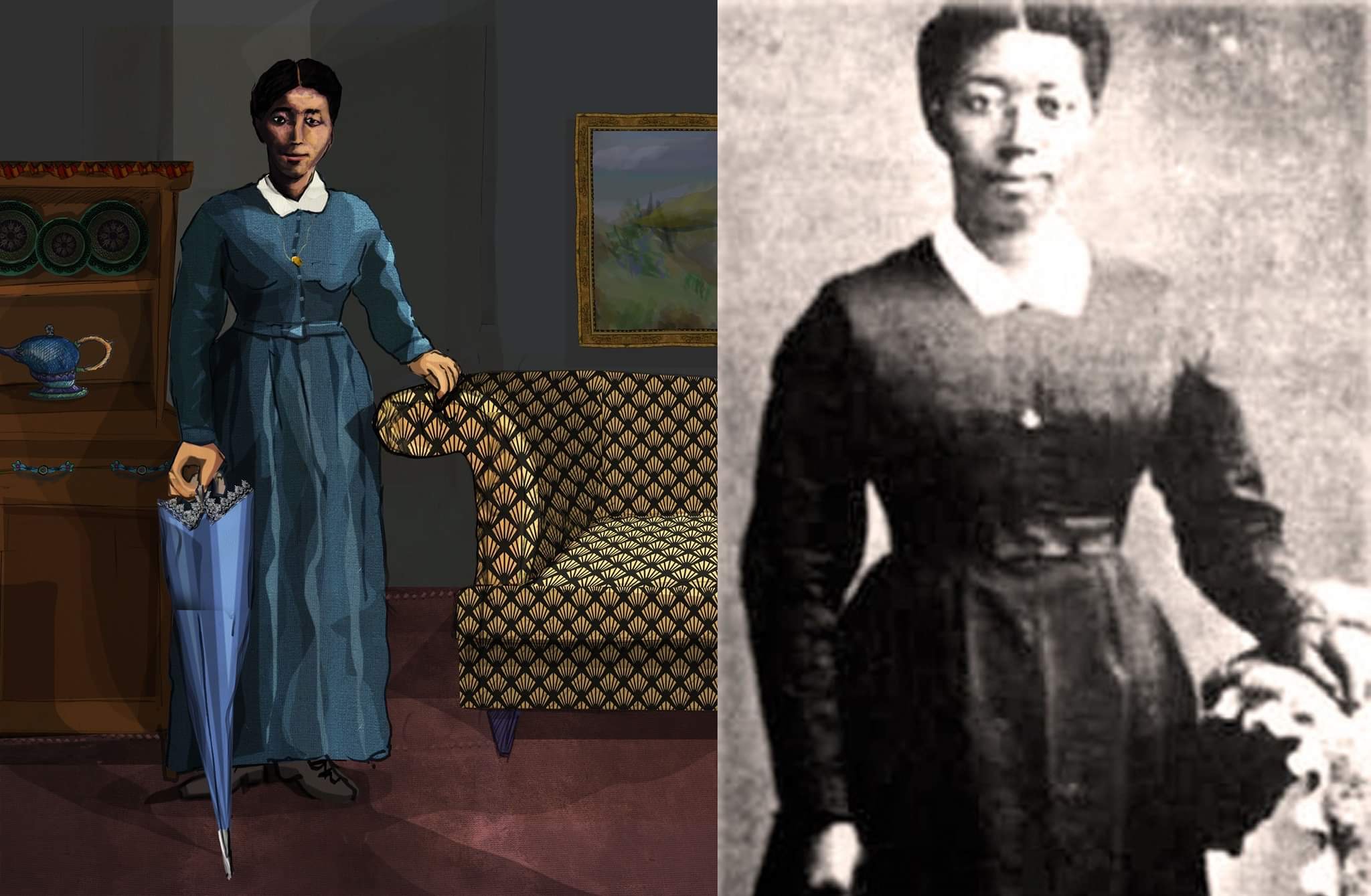
Jackson Rose
Jackson Rose came to Oregon in 1849, as a slave of Dr. William Allen. According to family lore, Allen knew about the Exclusion Laws, and decided not to bring Rose with them. However, Rose convinced the family to take her and travelled in a wooden box with ventilation holes, in order not to be seen. Rose was freed when they got to Oregon, but Dr. Allen died soon after they arrived. She is credited with helping the family survive the first winter by working as a laundress to bring in money. Rose married John Jackson, who was a groom for stagecoach horses around Oregon City. They settled in Waldo Hills in Marion County and raised their two children.

Robert Shipley
Few Americans realize that the institution of slavery reached the Pacific Northwest in the two decades before the Civil War. A small number of the white settlers who followed the Oregon Trail from Independence, Missouri to Oregon City brought bondservants. Oregon historian R. Gregory Nokes, describes one enslaved person, Reuben Shipley. “Why don’t you write about Reuben Shipley?’’ I had just bounced several ideas for a new book off of my brother Bill over an afternoon cup of coffee. He apparently hadn’t liked any of them. “Who was Reuben Shipley?’’ I asked, puzzled. “He was a slave brought to Oregon by one of our ancestors.’’ I was at once both dismayed and stunned. I felt for the first time therewas shame in my family, as I hadn’t had the slightest inkling there wasany family connection to slavery. And, I was stunned because it had never occurred to me there were slaves in Oregon. As a schoolboy, and much beyond, I had understood that Oregon had a law against slavery from the earliest days of its provisional government in 1843.This was fact; taught in schools; no reason to question. I was soon to discover there was much more to the slavery story. Bill told me I could read about Reuben Shipley on page 359 of a 1964 family genealogy, which I had never read, but my younger brother had. And so I now read on page 359 that Reuben Shipley was brought to Oregon as a slave in 1853 by his white owner, Robert Shipley, over the Oregon Trail from Miller County, Missouri. The white Shipley—my distant ancestor—had promised the black Shipley that if he helped him start his farm in Oregon, he would give him his freedom. A painful choice confronted Reuben Shipley. In exchange for the prospectof being free, he faced leaving behind his wife and two sons, who belonged to other slaveholders. But if he decided to remain in Missouri near his family, he would be sold as a slave to another owner. #hamptonrodriguez #hamptoniano #bohiostudio #pdxstory #pdxhistory #portlandhistory #oregonhistory Sue Staehli

